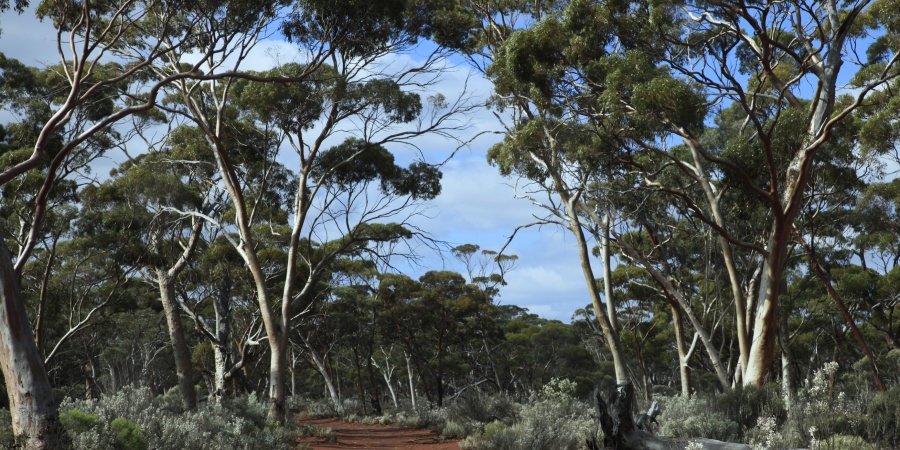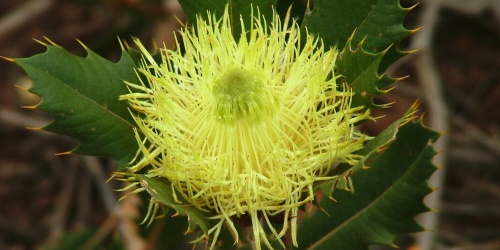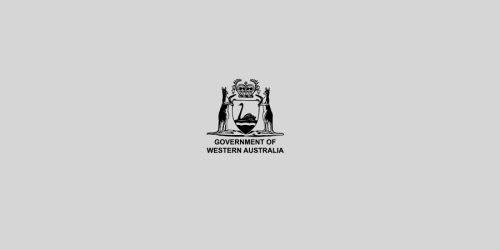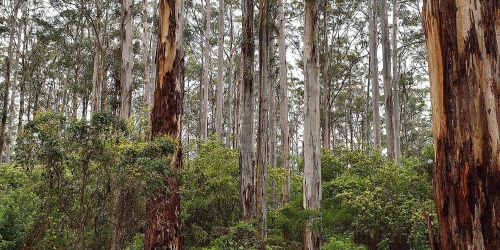
Goldfields woodlands. Photo: DBCA
Exploration for minerals on reserves managed by the Department of Biodiversity, Conservation and Attractions (DBCA) requires the approval of the Minister for Environment before consent to activities within that reserve can be granted by the Minister of Mines and Petroleum. For this consent to be granted, enough information must be provided about proposed exploration activities, and how risks and impacts on the environment and the reserve values and uses have been understood, avoided or mitigated.
A well-structured reserve activity management plan (previously referred to as a conservation management plan or CMP) can deliver this information.
DBCA’s Environmental Management Branch is the lead for providing guidance on preparing a reserve activity management plan.
What is a reserve activity management plan?
In Western Australia, the Mining Act 1978 (Mining Act) governs mining-related activities, overseen by the Department of Energy, Mines, Industry Regulation and Safety. Special legal requirements exist for obtaining consent for mining activities in reserves managed by the Department of Biodiversity, Conservation and Attractions under the Conservation and Land Management Act 1984 (CALM Act).
Exploration activities in these reserves requires Ministerial consent from the Minister for Mines and Petroleum. Many things are considered, including a precautionary government assessment of social, economic and environmental impacts and benefits of the proposed activities, best practice management, rehabilitation and closure.
Before the Minister for Mines and Petroleum can grant consent, concurrence or formal recommendations of the Minister for Environment and vesting body (Conservation and Parks Commission, and where joint vested, the Joint Responsible Body) are required. Whether concurrence or formal recommendations are required depends on the reserve classification.
This table details the requirements for each reserve classification.
| Tenure | Minister for Environment’s concurrence | Minister for Environment’s recommendations | Vesting body or bodies recommendations |
| Nature reserve class A | ✓ | ||
| National park | ✓ | ||
| Other reserves Class A in the South West (includes conservation park) | ✓ | ||
| State forest and timber reserves in the South West | ✓ | ||
| Nature reserve other than class A | ✓ | ✓ | |
| Conservation park class A outside the South West | ✓ | ||
| Conservation park other than class A outside the South West | ✓ | ✓ | |
| Other Crown reserve other than Class A, or class A located outside South West for example 5(1)(h) conservation and mining | ✓ | ✓ | |
| State forest and timber reserves outside the South West | ✓ | ||
| Parks and Wildlife-managed former pastoral leases and proposed CALM Act reserves |
To make informed decisions, information on proposed exploration activities and the potential risks and impacts on reserve values and uses is essential. Decision-makers also need to clearly understand how risks and impacts on reserve values and uses will be managed.
Consent is unlikely to be considered without sufficient information to provide confidence that the risks and impacts on affected reserves are well understood and can be adequately avoided or mitigated.
What does my reserve activity management plan need to include?
The following information is required in every reserve activity management plan.
- Descriptive title and version control (including relevant tenements and reserves)
- Corporate endorsement (to ensure the applicant fully understands the commitments included in the plan)
- Spatial information (such as shapefiles) and/or maps of proposed exploration or prospecting activities
- Information on proposed activities (including a quantitative description, and key characteristics of activities such as maximum number of drill pads and holes, maximum area of clearing and maximum depth and area of excavations)
- Environmental and reserve values (including findings of biological surveys) and uses
- Risk assessment of proposed activities
- Measures for management of impacts, and management commitments
- Aboriginal culture and heritage (including protection of, and adaptive management)
- Rehabilitation objectives
- Reporting commitments
- Communications with, and reporting to, the Department of Biodiversity, Conservation and Attractions (DBCA).
Information on how to prepare a reserve activity management plan is available in DBCA’s Reserve activity management plan guidance document (PDF). A reserve activity management plan template and checklist are also available for download.
What are the steps to create a reserve activity management plan?
These are the simplified steps for preparing a reserve activity management plan. It should be noted that prior steps and final steps in the process require the Department of Energy, Mines, Industry Regulation and Safety (DEMIRS) involvement as the regulator for the Mining Act 1978 (Mining Act). References to the ‘applicant’ include tenement holders (where the tenement is granted) and any consultants acting on their behalf.
- DEMIRS directs an applicant to consult with the Department of Biodiversity, Conservation and Attractions (DBCA) regarding proposed exploration and/or prospecting activities within a public reserve or reserves managed under the Conservation and Land Management Act 1984 (CALM Act).
- The applicant contacts DBCA’s Environmental Management Branch to arrange a scoping meeting to discuss proposed exploration and/or prospecting activities, and anticipated timeframes specific to the proposal. The applicant provides DBCA with the following information prior to the meeting:
- Maps and shapefiles of the tenement(s) and location of any proposed activities
- An overview of the proposed activities including equipment/disturbance proposed within the reserve. - Following the scoping meeting, DBCA’s Environmental Management Branch will provide correspondence confirming the approach, content and any local knowledge of the reserve (including spatial information, where appropriate) relevant to the reserve activity management plan.
- The applicant undertakes information gathering (including biological surveys as required) and develops a reserve activity management plan in accordance with the guidance, template, and checklist.
- The applicant submits the reserve activity management plan to DBCA’s Environmental Management Branch via email to EMBAdmin@dbca.wa.gov.au.
- DBCA will assess the reserve activity management plan against the checklist (within a target timeframe of 10 calendar days). If it meets the relevant requirements, DBCA commences a full review, and notifies the applicant that the review is underway. If the reserve activity management plan does not meet the requirements, an email is provided to the applicant summarising the deficiencies the applicant needs to address.
- DBCA will provide feedback to the applicant within an indicative timeframe of 60 calendar days from notification that the full review has commenced.
- Where required, the applicant updates the reserve activity management plan with additional information requested by DBCA and submits a revised reserve activity management plan with tracked changes.
- Where all outstanding information requirements have been addressed, DBCA’s Environmental Management Branch progresses to consultation with the vesting bodies (if required) and DEMIRS (to ensure compliance with the Mining Act). DBCA will provide information to the vesting bodies and DEMIRS within 60 calendar days of receiving the final reserve activity management plan.
- DBCA provides any comments or recommendations from the vesting bodies or DEMIRS back to the applicant to be addressed within the reserve activity management plan.
- On receipt of the final reserve activity management plan, DBCA’s Environmental Management Branch prepares relevant information on the applicant’s proposed exploration and/or prospecting activities for the Minister for Environment’s consideration. The applicant is notified by DBCA that the information has progressed to the Minister for Environment.
- The applicant is notified by DBCA's Environmental Management Branch when the Minister for Environment has provided their decision on concurrence or formal recommendations to DEMIRS.
At this stage the application returns to DEMIRS for final consent determination. All further communications will be from DEMIRS.
What is the role of the Environmental Management Branch?
The Department of Biodiversity, Conservation and Attractions (DBCA)’s Environmental Management Branch, along with the department's Land Use Planning Program, coordinates DBCA advice on a range of developments, including extractive industry, infrastructure and urban development. This advice primarily relates to proposals that directly or indirectly impact on CALM Act lands and waters, and/or threatened species or ecological communities.
DBCA, along with the Department of Energy, Mines, Industry Regulation and Safety, facilitates the process of providing information for mining consent decisions.
DBCA's Environmental Management Branch works closely with technical specialists and staff across DBCA, including those based in regional areas.
The ultimate decision makers and key advisors are the Minister for Mines and Petroleum and the Minister for Environment, along with relevant vesting bodies for the reserves.
Licensing and permit requirements
Licences, permits and authorities are required for a range of activities. These are issued under legislation including the Conservation and Land Management Act 1984 (CALM Act) and the Biodiversity Conservation Act 2016.
Other activities, including flying a drone over national parks and other conservation areas, require permission to be obtained from the department.
Obtaining a Regulation 4 Authority Notice
Authority may be required for an applicant to gain site access and undertake the activities required to complete a reserve activity management plan.
Western Australia’s national parks, conservation parks, nature reserves, State forest and timber reserves are managed under the CALM Act by the Department of Biodiversity, Conservation and Attractions (DBCA), on behalf of the Conservation and Parks Commission.
The CALM Regulations 2002 legislate how and when CALM lands can be accessed, and the activities and interactions permitted and prohibited on this land.
Biological investigations may be required to inform a reserve activity management plan and require an authority. These include (but are not limited to) accessing restricted areas or the removal of flora and fauna.
The authority to access the land is referred to under Regulation 4 (Lawful Authority) of the CALM Regulations. The approval to gain this access is delegated to the relevant DBCA District and/or Regional Manager.
To receive a licence for the taking of flora and/or fauna on CALM lands, an application for Regulation 4 Authority form must also be completed. The licence approval process is managed by DBCA's Wildlife Licensing section, who confer with the relevant District and/or Regional Manager for which the licence and Regulation 4 Authority is to be issued, and will be able to assist with any queries.
Licences for flora
In addition to a Regulation 4 Authority (which is required to authorise a person to take flora from CALM Act lands), other flora licences may be required.
The DBCA Flora Licences web page provides more information about the types of licences that may be required, along with contact information for Wildlife Licensing section, who can assist with any queries.
Flora Licences | Department of Biodiversity, Conservation and Attractions (dbca.wa.gov.au)
Licences for fauna
The Fauna Licences page on the DBCA website provides more information about the types of licences that may be required, along with contact information for Wildlife Licensing. It may be necessary to contact Wildlife Licensing to obtain the necessary forms.
Fauna Licences | Department of Biodiversity, Conservation and Attractions (dbca.wa.gov.au)
Using drones in conservation reserves
Permits for drones used for commercial purposes (including exploration, filming and photography) can be obtained via DBCA’s Commercial Operator Licensing System.
Further information and guidance on the use of drones in reserves can be found here: Drones in parks | Explore Parks WA (dbca.wa.gov.au)
Mapping tools
TENGRAPH Web is a mapping tool available on the Department of Mines, Energy, Industry Regulation and Safety (DEMIRS) website. It is a spatial enquiry and mapping system displaying Western Australian mining tenements in relation to other land tenure information (for example reserved land).

To access TENGRAPH Web, a user needs to register for the service via an online form, and be granted approval by the department, which is confirmed via email.
It is possible to view a tenement in relation to land managed by the Department of Biodiversity, Conservation and Attractions (DBCA) on TENGRAPH Web. Within the ‘Cadastre’ layer, the following can be selected:
- Crown Reserves (this will display National Parks, Class A Reserves and conservation reserves and other uses)
- Crown Reserves Timber
- 5(1)G Reserve
- 5(1)H Reserve
- State Forest.
Zooming into an area will display the name and reserve type.
File Notation Areas (FNA) relevant to DBCA display any proposed change in land use, such as proposed conservation reserves. However proposed reserves are not fully represented on TENGRAPH Web and this tool is not comprehensive in this regard.
Useful website links
The following sites have information that can help with preparing a reserve activity management plan.
Dandjoo biodiversity data platform
Part of the Biodiversity Information Office, Dandjoo is Western Australia’s whole-of-state biodiversity data platform, providing a way to discover and explore data from government, industry, and research providers.
Department of Biodiversity, Conservation and Attractions (DBCA) Management Plans
This is a comprehensive directory of DBCA's management plans for marine and terrestrial parks and reserves in accordance with the Conservation and Land Management Act 1984.
Department of Energy, Mines, Industry Regulation and Safety (DEMIRS) website
DEMIRS oversees the Mining Act 1978 (Mining Act), which governs mining-related activities.
Threatened species and communities database search
This page provides a database search service to assist proponents in ascertaining if threatened or priority flora, fauna or ecological communities may be present at a particular location.
How can I contact the Environmental Management Branch?
At the Department of Biodiversity, Conservation and Attractions (DBCA), reserve activity management plans are the responsibility of the Environmental Management Branch, based at Kensington. All communication relating to these plans is coordinated through this office. There is no need to contact DBCA regional offices directly before submitting a reserve activity management plan.
To contact DBCA’s Environmental Management Branch, please email EMBadmin@dbca.wa.gov.au or phone 9219 9500.





